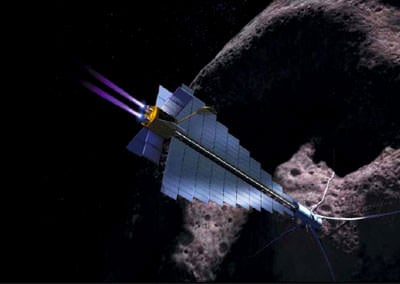Astronomy Cast Ep. 238: Solar Activity

Giant Sunspot Turns to Face the Earth

Swift Satellite Captures Asteroid 2005 YU55's Tumbling Flyby
Rare Pallasite Meteorite Found in Missouri

Was a Fifth Giant Planet Expelled from Our Solar System?

The Expanding Universe - Credit To Hubble Or Lemaitre?

New Symphony of Science Video: Onward to the Edge
New NASA Mission Hunts Down Zombie Stars

New ESA Images Reveal Volcanic History of Mars

How the Moon Became Magnetized

Russians Race against Time to Save Ambitious Phobos-Grunt Mars Probe from Earthly Demise

NASA Test-Fires Key Engine for New Launch System
Carl Sagan's Influence: Favorite Quotes from Readers

Every Way Devised to Deflect an Asteroid

Does The Pluto System Pose A Threat To New Horizons?

Images, Video from Around the World of Asteroid 2005 YU55's Close Pass

Live Webcast as Keck Telescope Attempts Images of Asteroid 2005 YU55

Trouble for the Phobos-Grunt Mission

First Movie of Asteroid 2005 YU55's Flyby
Russia's Bold Sample Return Mission to Mars and Phobos Blasts Off

Alien Artifacts May Be Here... Just Hard To Find!

'Sweet Spots' for Formation of Complex Organic Molecules Discovered in Our Galaxy

Russian Mars Moon Sample Probe Poised to Soar atop Upgraded Rocket - Video

Just In: NASA's Latest Image of Asteroid 2005 YU55

Hoping to See Asteroid 2005 YU55? There's an App for That!
Andromeda Dwarf Galaxies Help Unravel The Mysteries Of Dark Matter

Carnival of Space #222

Asteroid 2005 YU55: See It For Yourself!

Awesome Action Animation Depicts Russia's Bold Robot Retriever to Mars moon Phobos

Forget Exoplanets. Let's Talk Exo<em>moons</em>

Curiosity Rover Bolted to Atlas Rocket - In Search of Martian Microbial Habitats

Telescope Review: Bushnell ARES 5" Dobsonian Telescope - The Little "Lighthouse"

Astronomy Without A Telescope - Inconstant Supernovae?

No Alien Visits or UFO Coverups, White House Says

Hubble Telescope Directly Observes Quasar Accretion Disc Surrounding Black Hole

Phobos-Grunt and Yinghuo-1 Encapsulated for Voyage to Mars and Phobos

An Iceberg Caught in the Act of Forming
Asteroid 2005 YU55: An Expert's Explanation

Looking For the City Lights of Alien Civilizations

Honoring Copernicus - Three New Elements Added To The Periodic Table

Borexino Collaboration Detects pep Neutrinos

Did A Supernova Shape Our Solar System?

Hatch Opens as Simulated Mars Mission Ends
Jupiter at Opposition by Efrain Morales

NASA Robot seeks Goldmine of Science and Sun at Martian Hill along vast Crater

Star Lab: Space Science on the Wings of Starfighters

Asteroid 2005 YU55 Gets Closer to Earth; "No Chance of an Impact"

Largest Sunspot in Years Now on the Sun

NASA Developing Real-Life Tractor Beams

 Universe Today
Universe Today